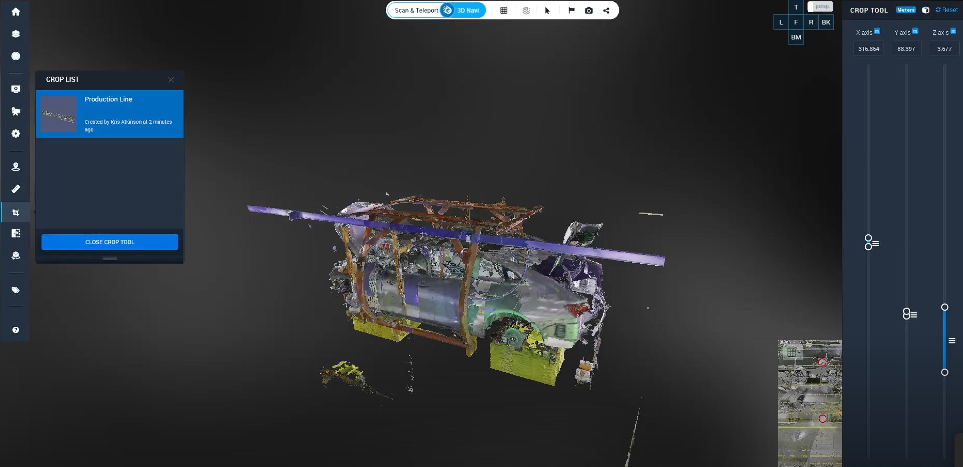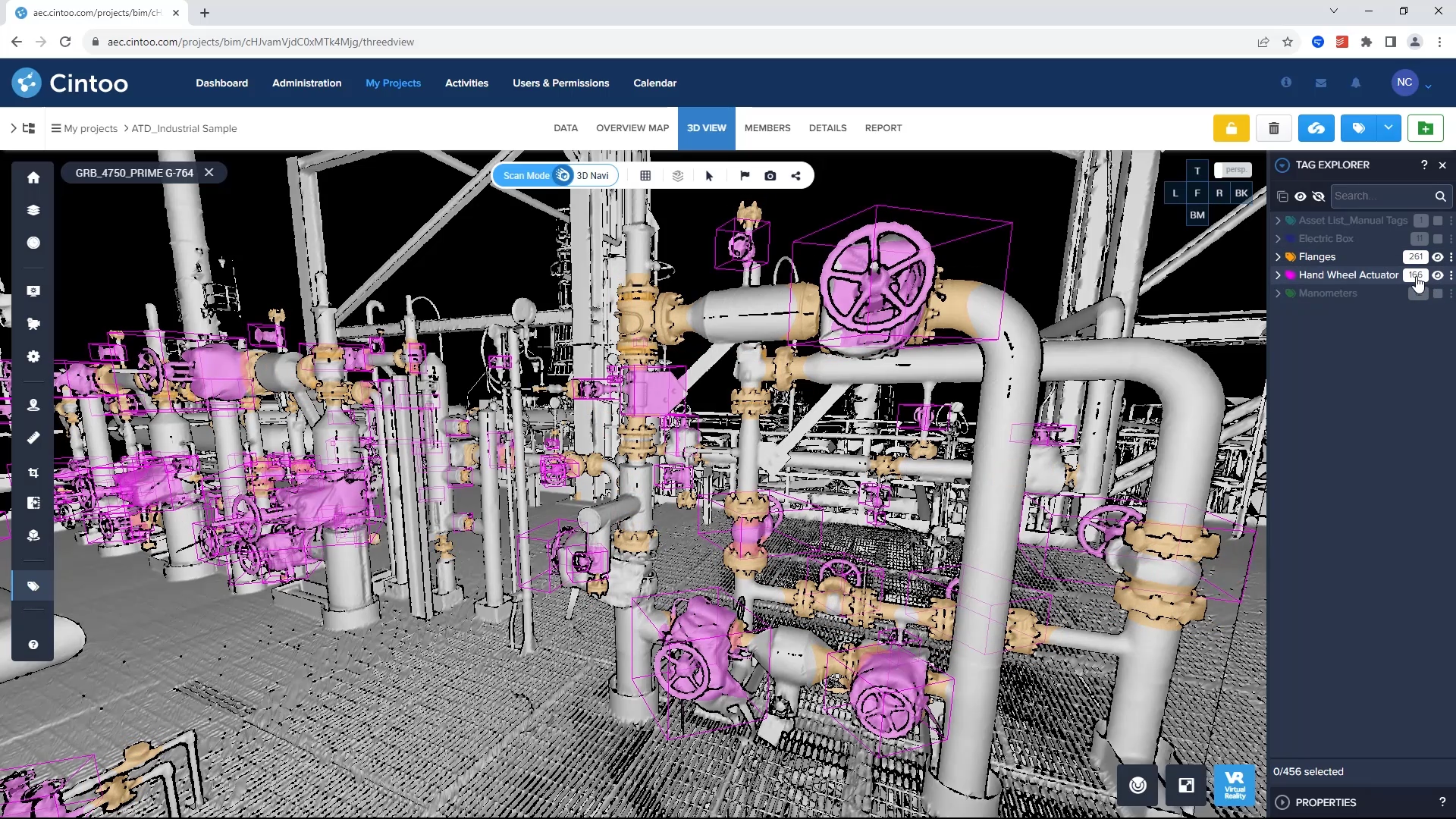
How AI Is Transforming Asset Tagging in Virtual Automotive Factories
Understanding Virtual Automotive Factories
Virtual automotive factories are digital twins of physical manufacturing facilities, created using advanced reality capture technologies such as laser scanning and 3D modeling. These virtual environments enable automotive companies to optimize production processes, analyze workflows, and simulate various scenarios before implementing physical changes on as-installed spaces. By leveraging these digital replicas, teams can collaborate remotely, enhance efficiency, and minimize costly errors in facility planning and operations.
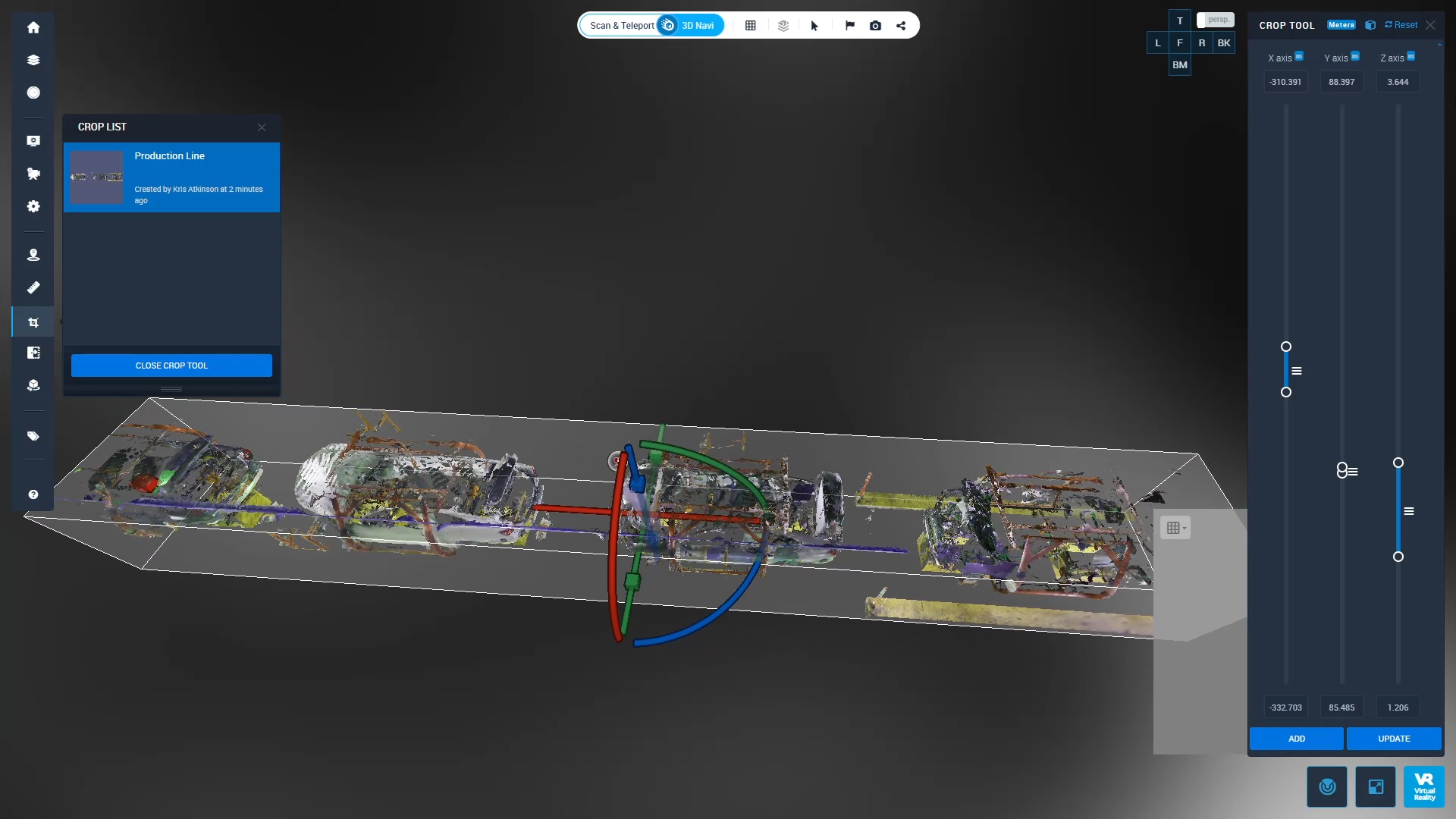
The Advantages of a Virtual Workflow
Transitioning to a virtual workflow offers numerous benefits over traditional manual inspections and blueprint-based planning.
The first benefit is enhanced accuracy. Laser scans can be uploaded into a cloud-based platform for improved detail and coordination. This also allows the team to virtually perform precise measurements and real-time updates, ensuring that all stakeholders have access to the most current data.
The second benefit is improved collaboration. Teams across different locations can access and analyze the same data simultaneously, facilitating better communication and decision-making. These teams also include suppliers that may be based in different locations and need access to site data for accurate information. As John Brown, Reality Capture Supervise at General Motors, has explained, point cloud data taken from the laser scans becomes crucial in providing access to all important stakeholders. “The interpretation of scan data has taken the workflow from an expert’s application and has made the data usable by the masses. the masses.”
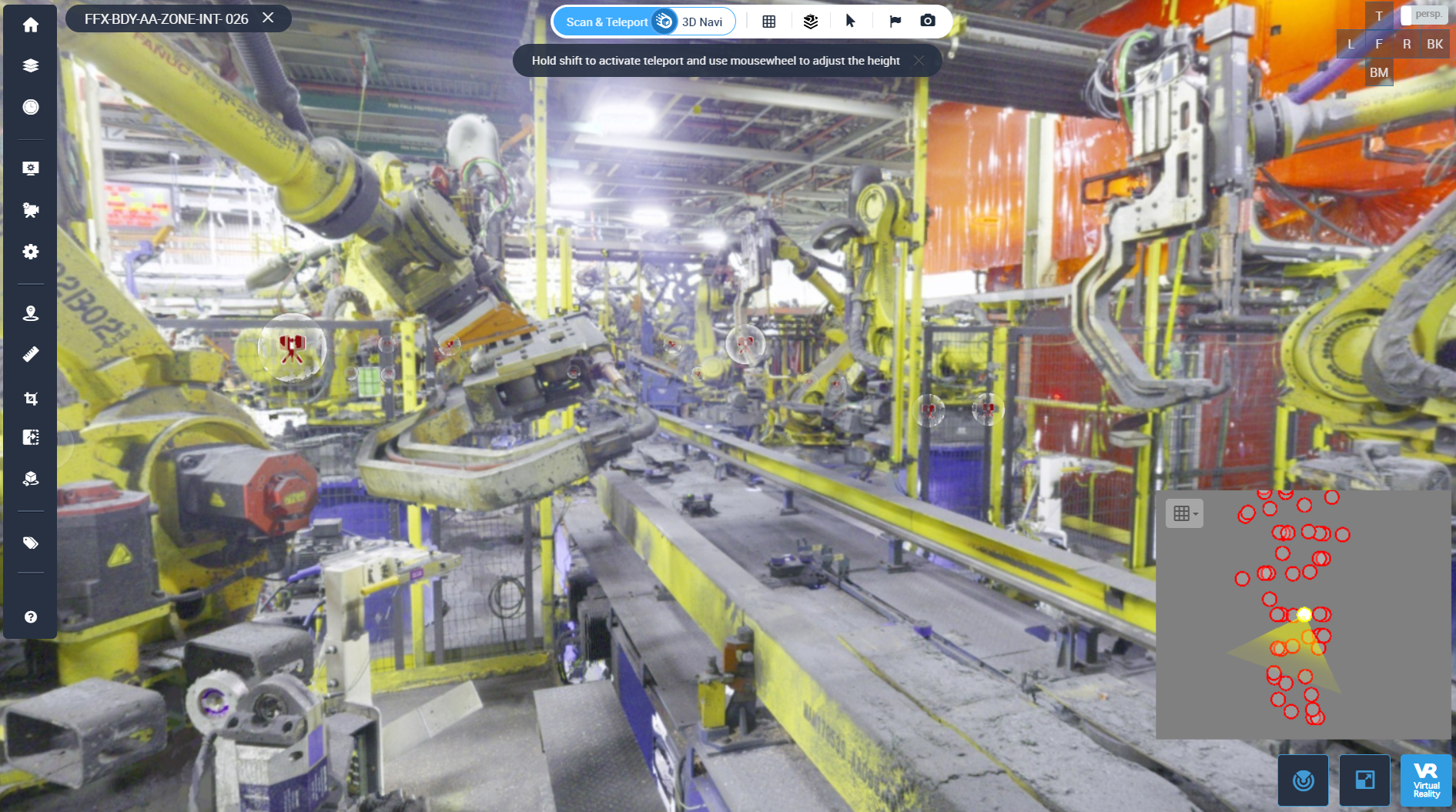
Reduced downtime means that projects, including automative retrofits and facility updates, can be performed quicker and with more accuracy. Simulations and predictive maintenance help prevent unexpected equipment failures, thereby minimizing production interruptions.
Lastly, resource optimization means that, at the level of interpreted scan data reflecting the as-installed site, you and your team can have a better handle on asset-intensive environments. AI-driven insights assist in the efficient allocation of materials and equipment, leading to cost savings and increased productivity.
The Role of AI in Equipment Classification
Artificial intelligence is pivotal in refining virtual automotive factories by automating the classification and tagging of assets. AI-driven systems can analyze vast amounts of data to identify critical equipment, assembly line components, and safety indicators with remarkable speed and accuracy.
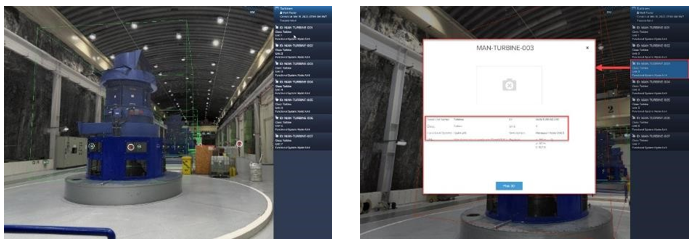
Identifying Key Equipment in a Facility
AI algorithms can scan and categorize factory assets based on predefined parameters, enabling manufacturers to:
Recognize essential machinery and understand their functions within the production process.
Monitor equipment conditions in real-time, allowing for proactive maintenance.
Streamline maintenance schedules through predictive analytics, reducing the likelihood of unexpected breakdowns.
Improve clash detections and other equipment run-ins, ensuring accurate measurements and comparisons to as-installed and modelled aspects.
Optimizing Assembly Line Components
By employing AI-powered classification, manufacturers can enhance production efficiency by detecting bottlenecks and inefficiencies within the assembly line. They can also classify various workstations and understand their roles in the overall workflow, allowing better cross-collaboration. As John Brown says when explaining the need for automatic classification, “We have very complex automotive facilities, but we needed an easy way to get around them to be able to highlight specific areas in the plant and catalog and classify them directly. In Cintoo, we can move around easily and share that information with a team member down the line through something as simple as a web link.”

With a virtual site replication due to mirrored 3D scan data in a cloud-based platform, teams can map equipment dependencies to improve coordination and minimize delays. In automotive factories, where health and safety measures are a priority, AI-driven analysis, including when tagging assets automatically, can help identify hazardous zones, ensure adherence to safety regulations through continuous real-time monitoring, and automate incidence reports, leading to easy implementation of preventive measures to mitigate future risks.
AI-Powered Asset Tagging with Cintoo
The Importance of Laser Scanning and Reality Capture
Creating accurate digital twins relies heavily on laser scanning and reality capture technologies. These methods collect detailed spatial data, which AI processes to classify and tag various elements within a facility. Without structured asset tagging, raw scan data can be challenging to interpret and utilize effectively. It can also be hard to map a fully virtual layout of your site where everyone, no matter where they’re located, can access the same data.

Leveraging Cintoo’s Platform
Cintoo’s cloud-based platform offers automotive manufacturers the tools to:
Efficiently Store and Manage Large 3D Scan Datasets: The platform handles massive amounts of data, ensuring that it is organized and easily accessible.
Stream High-Resolution Reality Capture Data: Users can view detailed 3D models without the need for high-end hardware, facilitating broader accessibility.
Utilize AI-Driven Asset Tagging: The platform’s AI engine automatically classifies critical components, streamlining the identification process.
Compare As-Installed Versus As-Designed Conditions: By overlaying the actual installation with design specifications, users can quickly identify discrepancies and address them promptly.
Enhancing Virtual Factories with Cintoo’s AI Classification
Identifying Critical Equipment and Assembly Line Components
Cintoo’s AI-powered classification tools analyze reality capture data to easily and automatically tag machinery and equipment, reducing manual effort. With Cintoo’s asset tagging, driven by AI’s interpretive and predictive insight, you and your team can more quickly ensure all equipment is monitored and annotated. In Cintoo, you can also identify deviations from expected layouts, allowing for quick corrective actions which saves your bottom line. By improving inventory and asset management, you can ensure all stakeholders have a comprehensive grasp and overview of all assets which, in an asset-intense environment like an automotive facility, is crucial to providing a holistic understanding.
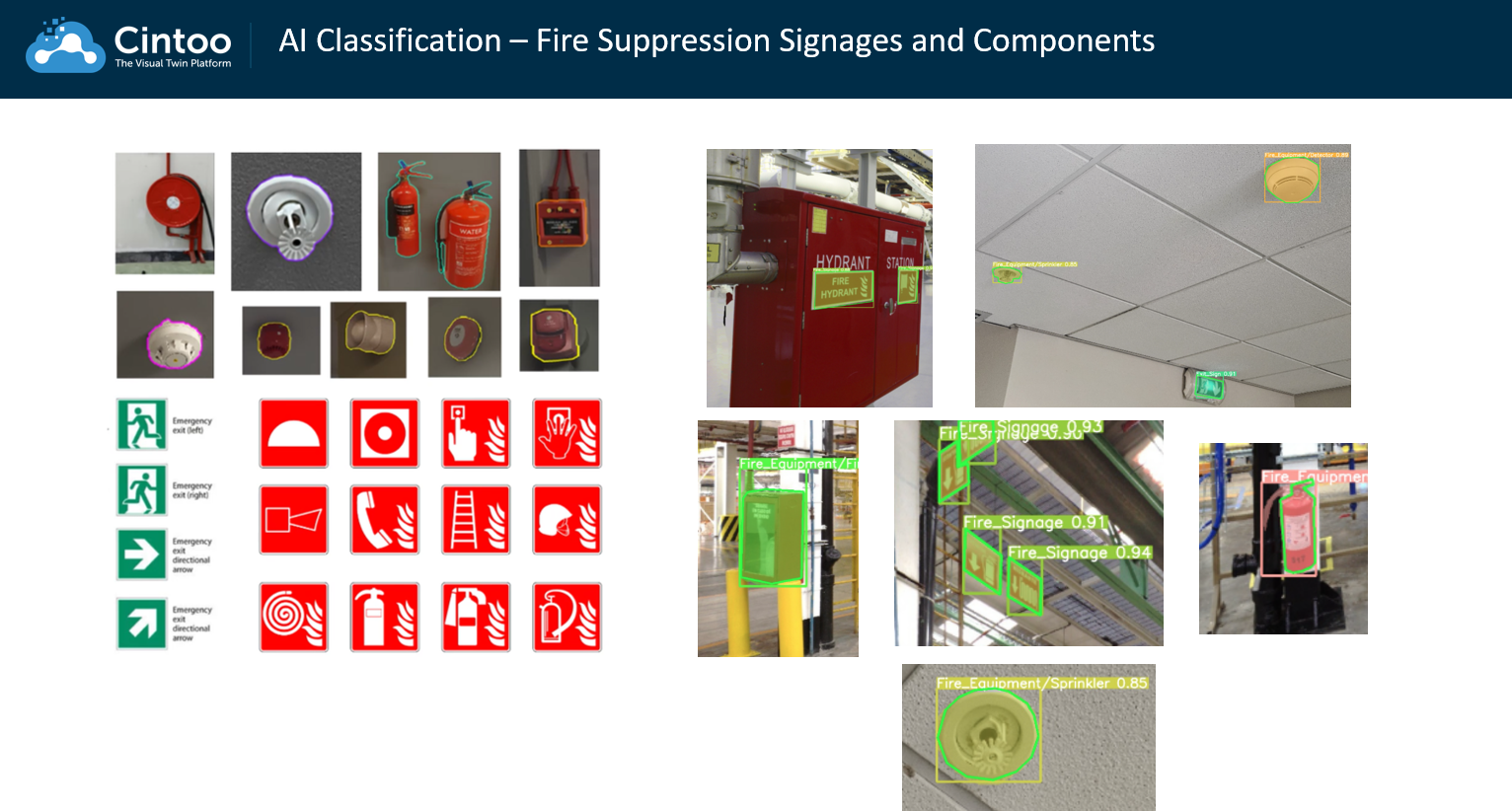
Comparing As-Installed and As-Designed Conditions
AI-driven classification assists manufacturers in distinguishing between the as-installed and as-designed layouts. This comparison ensures early detection of misaligned equipment or assembly issues, preventing potential production issues. This means that swift resolution of installation errors will help you maintain the integrity of the production process. Providing enhanced quality control and compliance with design specifications is also a must when ensuring all production updates or installed equipment meets the right standards.
Implementing the Process: A Step-by-Step Scenario
A practical application of Cintoo’s platform in an automotive manufacturing setting involves the following steps:
Step 1: Conducting Laser Scanning of the Facility
Teams perform laser scans of the manufacturing facility, capturing a highly detailed 3D representation of the environment. This process involves using high-resolution scanners to collect comprehensive spatial data.
Step 2: Uploading and Analyzing Data in Cintoo
The scanned data is uploaded to Cintoo, where it can be streamed and viewed remotely. The platform’s AI engine processes this data, automatically tagging and classifying key components such as electric motors, valves, and control boxes.
Step 3: Interpreting Insights and Utilizing the Toolkit
Using Cintoo’s suite of tools, teams can:
Compare real-world conditions with design plans to identify discrepancies.
Detect issues and potential improvements in the layout, such as misaligned equipment or inefficient workflows.
Share insights across departments like your engineering team, facilitating informed decision-making and collaborative problem-solving. This also means that the engineering team, for instance, can quickly make adjustments with a new level of informed accuracy. As John Brown explains again, “Cintoo has allowed us to truly bring the plant to the engineer.”
Step 4: Acting on AI-Powered Classification
After the AI-driven classification and asset tagging are complete, employees can use the insights to adjust assembly line configurations to optimize efficiency and enhance safety compliance by addressing identified hazards. You will also be able to improve maintenance planning by scheduling proactive interventions based on the condition of the equipment.
AI-powered classification is revolutionizing virtual automotive factories, making them more intelligent, efficient, and responsive. Platforms like Cintoo bridge the gap between raw reality capture data and actionable insights, enabling manufacturers to optimize workflows, enhance safety, and improve asset management. As AI continues to evolve, its role in shaping the future of automotive production will only expand, offering even greater opportunities for innovation in virtual factory implementation.
Try a free demo today!
